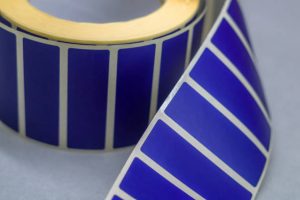There are many different printing techniques, and each has its benefits and drawbacks. These methods include planographic, letterpress, intaglio, and relief printing. Planographic printing is a method that places the printing area on a flat surface, and the non-printing area is below the surface. Intaglio printing is a different type of relief print, where the image is etched rather than raised.
 Processes of Ariel Printing sticker printing Adelaide involve different types of printing and are classified into several categories, each with its strengths and weaknesses. Some processes are more traditional than others. They are letterpress printing, lithography, and gravure, and they involve various methods of applying pressure to image areas and transferring them onto a substrate. Inkjet printers use nozzle sprays to apply ink to paper, while laserjet printers use dry ink (toner) that bonds to paper using static electricity.
Processes of Ariel Printing sticker printing Adelaide involve different types of printing and are classified into several categories, each with its strengths and weaknesses. Some processes are more traditional than others. They are letterpress printing, lithography, and gravure, and they involve various methods of applying pressure to image areas and transferring them onto a substrate. Inkjet printers use nozzle sprays to apply ink to paper, while laserjet printers use dry ink (toner) that bonds to paper using static electricity.
Intaglio printing uses a metal plate to make prints. The plate is exposed to light through a transparent image carrier. The insoluble portions of the plate remain after the process, and they become ink carriers during printing. The intaglio printing process relies on highly specialized photographic equipment, methods, and materials. The first methods of printing were photomechanical. Today, these methods are almost obsolete. Fortunately, modern photochemistry has made it possible to reproduce intaglio images without the use of acid.
The best ways to increase response rates with print are to get creative. Try using some new techniques instead of sending the same drab marketing materials that everyone else does. Read this article for more ideas. It was originally published in Tactics, a bi-monthly industry publication that features thought-provoking strategies and expert advice. Techniques for printing include:
Printing has been around for centuries. The earliest method involved carving an image onto a wood surface. Later, offset lithography, also called litho, used printing plates made of aluminium to hold images of the content. Some printing techniques have special requirements, such as ink, paper, and typeface. These requirements are what make these methods so versatile. Listed below are a few of the most common methods of printing:
Using different printing techniques, artists can create multiple copies of one original work of art. While prints are considered original artistic works, they are often mass-produced. They are unique in their visual qualities. This characteristic is not the same for all prints. A print can be produced in various sizes and styles, and if multiple copies are made, they are usually of low quality. If you’re interested in experimenting with various printmaking methods, you can start by looking at some of the most common printmaking techniques.
Among the oldest and most expensive Ariel Printing sticker printing Adelaide methods, engraving is the most expensive and time-consuming method. It is usually reserved for high-profile corporate executives and fancy gala invitations. While engraving is expensive, it is one of the most beautiful ways to make a printed image. Unlike printing on paper, engraved images are crisp and saturated. In addition to being highly detailed and durable, engraving is expensive. For that reason, it’s only used for a limited number of pieces.
There is no one-size-fits-all solution in the world of Ariel Printing sticker printing Adelaide. Different materials convey different messages. Different substrates are appropriate for different purposes, from glossy images to explicit text messages. Paper is often the first thing that comes to mind when discussing printing, but there are many types and finishes to choose from. Below, we’ll look at the differences between different paper types and their uses. You can choose the best type of paper for your project by considering the following factors.
Different types of filaments offer a wide range of benefits. While the PLA filament is the most common choice for printing, wood requires some finishing to give it a natural look. Wood filaments are commonly used for sculptures and other wood-like carvings. Sandstone, or gypsum, is another popular material for 3D printing. Sandstone is a great option for building full-colour parts in one process. Epoxy resin is sometimes added to improve the colour quality and strength of sandstone. However, it is generally used for conceptual prototypes and architectural models.
Jabil, a leading 3D printing materials supplier, has found that more customers are looking for customized materials. In addition to wood and PLA, other materials allow users to custom-engineer their projects. Custom-engineered materials also offer benefits like flame retardancy, conductive, lubrication, and electrostatic dissipation. For more specific applications, custom-engineered materials are a good choice.